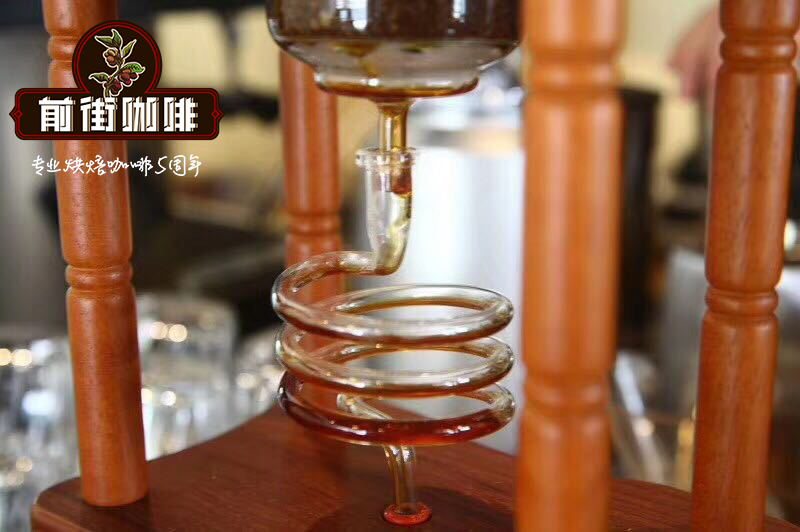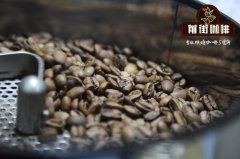How does the 21-mesh gold mantenin coffee bean taste in Indonesia? introduction to the coffee producing area of Gao Mantenin

Professional coffee knowledge exchange more coffee bean information please follow the coffee workshop (Wechat official account cafe_style)
Inadvertently got some 19-mesh wet Manning coffee, from the surface we can see that the freshness of this one is excellent. However, from previous experience, it is more safe to serve deeply. But the most surprising thing happened in the baking, which smelled like rose summer. Once again, it was lightly baked and brewed, and sure enough, it had a taste similar to that of rose summer. But we think that rose summer is the smell of flowers and fruits, and when it comes to this kind of beans, it is more appropriate to describe the smell of flowers and plants, but the smell of grass is not annoying. Out of curiosity, I asked the bean merchant whether Aceh began to plant rose summer. The bean merchant just laughs that it is only a local large grain variety in Indonesia, and the beans are relatively fresh if they are treated with wet planing. This answer really surprised me.
We tried to bake the wet planer Manning under 19 mesh again. It is true that light baking will produce the flavor of flowers and plants, but not as violently as the large varieties. After that, we tried to buy 20-mesh and 21-mesh varieties again, and they all had this taste, but the 20-and 21-mesh varieties were not easy to bake thoroughly, and once the 21-mesh varieties were properly baked, the floral, chocolate, sour and sweet flavors echoed each other. Once again, it subverts my understanding of Mantenin.
It was only later learned that Aceh now gives up the struggle and takes growing coffee as its main business. The output of Aceh has exceeded that of Lindong region, and in my opinion, the quality is also greatly leaping over Lindong region. This made me have to shout, "Coffee brings world peace!" "
Golden manning coffee
Gold manning is very familiar to many of our friends. But the naming of Golden Manning may not be what many friends think.
First of all, Golden Manning Coffee does not refer to the color of golden yellow, but large-size coffee beans, that is, coffee beans with more than 19 mesh, which is called Golden Manning. But as many suppliers find that there is no direct relationship between large size and taste, fewer and fewer people order gold manning.
As for why Manning's old beans are golden, it is because Medan, the coffee transfer station, is very wet (more than 80% of the tide). If you have stored coffee for more than 6 months, the reason why the coffee will return to moisture.
Grading of Sumatran coffee beans
We often hear 'Super Manning', while at the same time, Manning's coffee raw beans are of poor quality. In fact, coffee in Sumatra is graded more systematically.
As shown in the figure, in every 300g
No more than 11g with physical defects is called GR1. According to the traditional selection of raw beans in Indonesia, this has to be screened at least twice.
If there is a 12-25g defect, it is GR2. Below is GR2 in the sack.
If we see the coffee beans in the picture below, it's under GR4. Therefore, if we receive such raw beans and claim to be first-class, it is obvious that the raw bean merchants are not responsible.
Raw bean screening workshop
Of course, people will ask, if you only pick raw beans, what are the chemical defects? This is a big topic, but I have to say that there is still coffee soft power in Indonesia. Professional cup surveyors and even Q grader are very strict with the quality control system. I will elaborate on this later.
Cup test, different producing areas, different sacks, different months of harvest, different treatments. Basically this is the norm, thus tracking the quality of each production area and time.
END
Important Notice :
前街咖啡 FrontStreet Coffee has moved to new addredd:
FrontStreet Coffee Address: 315,Donghua East Road,GuangZhou
Tel:020 38364473
- Prev

Does sweet fruit manning taste good? Sumatra Karyana treatment station high altitude full-water manning coffee
Professional coffee knowledge exchange more coffee bean information please follow the coffee workshop (Wechat official account cafe_style) it is generally believed that as long as the coffee produced from Sumatra is commonly known as Mantenin coffee, there will be such a saying comes from some internationally renowned coffee company, but in fact there are many coffee producing areas on Sumatra, each producing coffee flavor
- Next

Introduction to the characteristics of Indonesian Sumatran tiger 19-mesh Lin Dong Mantenin G1 coffee beans how to drink tiger Mantenin
Professional coffee knowledge exchange more coffee bean information please follow the coffee workshop (Wechat official account cafe_style) to tell us more about the three common top manning coffee 1.BIWA tripod gold manning coffee clean, wild, calm-- the showdown of the three top gold mantenin. In recent years, by
Related
- Detailed explanation of Jadeite planting Land in Panamanian Jadeite Manor introduction to the grading system of Jadeite competitive bidding, Red bid, Green bid and Rose Summer
- Story of Coffee planting in Brenka region of Costa Rica Stonehenge Manor anaerobic heavy honey treatment of flavor mouth
- What's on the barrel of Blue Mountain Coffee beans?
- Can American coffee also pull flowers? How to use hot American style to pull out a good-looking pattern?
- Can you make a cold extract with coffee beans? What is the right proportion for cold-extracted coffee formula?
- Indonesian PWN Gold Mandrine Coffee Origin Features Flavor How to Chong? Mandolin coffee is American.
- A brief introduction to the flavor characteristics of Brazilian yellow bourbon coffee beans
- What is the effect of different water quality on the flavor of cold-extracted coffee? What kind of water is best for brewing coffee?
- Why do you think of Rose Summer whenever you mention Panamanian coffee?
- Introduction to the characteristics of authentic blue mountain coffee bean producing areas? What is the CIB Coffee Authority in Jamaica?

